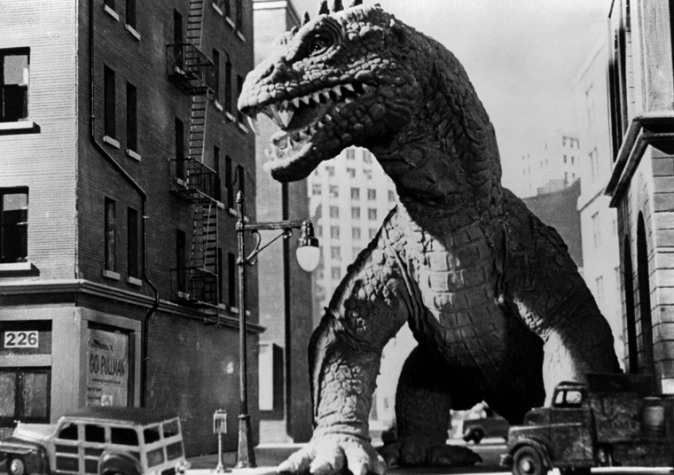Some years ago I was lucky enough to meet Ray Harryhausen in Bradford, West Yorkshire, when he visited the city’s National Media Museum to unveil a permanent exhibition of his private collection of models, drawings and designs for some of the most famous monsters in film-land.
This was just ahead of Harryhausen’s 86th birthday. It struck me as surprising that he had only just, days before, been fitted with his first ever pair of spectacles. After a lifetime spent scrutinising the minute detail of the creatures he brought to stop-motion life in workshops and movie lots, you’d have thought the eyesight would have been the first thing to go.
I told Harryhausen, who died on Tuesday aged 92, that the iconic sequence in which skeletons spring fully-formed from dragon teeth sewn in the soil in 1963’s Jason and the Argonauts had terrified me as a child and stayed with me throughout adulthood.
Those eyes, only recently deemed needful of magnification aid, positively twinkled. “Why?” he said. “What’s so scary about skeletons? You have one inside you.”
I remember roping in the photographer who was shooting pictures of the original models from movies Harryhausen had worked on, the many-armed Kali from the Golden Voyage of Sinbad, dinosaurs from Valley of the Gwangi, a tiny Raquel Welch from One Million Years BC, and asking him what he thought about the skeletons. When he shuddered, Harryhausen conceded: “Perhaps they were a bit scary.” He thought back more than four decades. “In fact, when the film was first shown in the UK, the censors cut out that entire sequence.”

It’s the 60th anniversary this year of the release of The Beast From 20,000 Fathoms, the first movie on which Harryhausen earned solo special effects credits. Famously, his imagination had been fired by seeing King Kong in 1933, when he was just 13. Harryhausen’s father worked at RKO studios but Hollywood in those days was a closed shop and the young Ray couldn’t get a foot in the door, he told me. So he decided to teach himself the techniques of stop-frame animation and managed to secure himself a role working with George Pal on a series of animated shorts called Puppetoons.
With the door to that closed shop creaking open for him, Harryhausen was able to meet his idol, King Kong special effects maestro Willis O’Brien, who invited him to work on Ray’s first major movie—Mighty Joe Young.
By 2006, when I met Harryhausen, the world of film-making had changed beyond anyone in those early days of Hollywood’s wildest dreams. He said to me: “There’s more money spent on a 30-second TV advert than I ever had to spend on a whole movie.”
But while he was used to people asking him about CGI—and inviting him to trash it in favour of his literally hands-on approach to special effects—he was diplomatic about it. “It’s a wonderful tool. But it isn’t the be-all and end-all of special effects. I think that working with a low budget makes you more creative. You have to think about how to overcome the problems and you spend more time on telling the story.”
The National Media Museum has a vast array of Harryhausen memorabilia in its vaults. They say: “This collection is one of our most significant acquisitions of recent times. It contains several thousand objects, making its relocation to Bradford a major task.” Since beginning to catalogue, photograph and transport the collection to Bradford seven years ago the museum has placed different elements of it on display—most recently it was Harryhausen’s dinosaurs, before that his science fiction models and spaceships. The museum says: “Once it is all here, as well as elements being publicly exhibited, it will be stored within our research centre under the appropriate environmental conditions to ensure it remains available for public enjoyment for as long as possible.”
If you’re ever near Bradford, you must take the opportunity to visit the National Media Museum and gaze upon Harryhausen’s work. I remember him walking with a cane but seeming sprightly despite this, those eyes always twinkling. At 92 he had, by anyone’s account, a good innings, and leaves us a lasting legacy of monster proportions, dinosaurs, skeletons and all.
David Barnett is an author and journalist based in the north of England. His novel Gideon Smith and the Mechanical Girl, the first in a steampunk/alternate history/Victoriana series, is published in September 2013 by Tor Books. Book two has dinosaurs. Lots of them.









